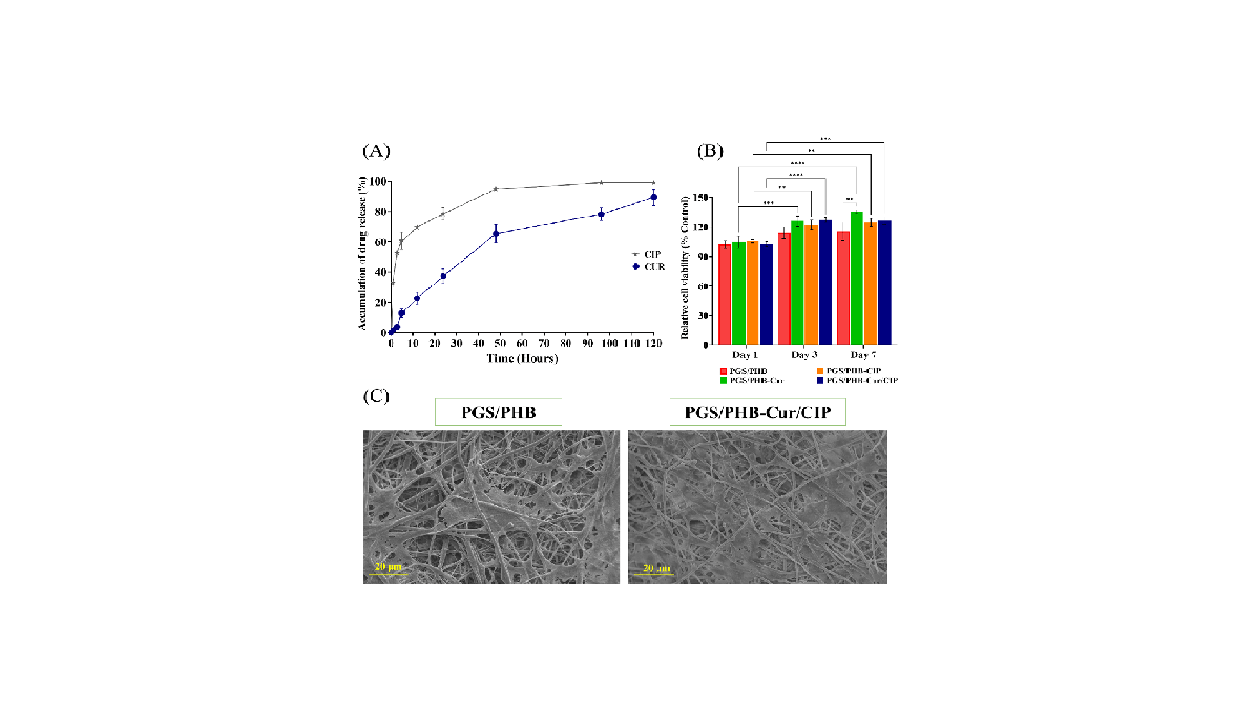The utilization of biomaterial scaffolds may promote the regeneration of cutaneous wounds. The investigation focused on fabricating an innovative type of scaffold for skin tissue regeneration through the coaxial electrospinning technique. The scaffold consisted of two segments: the core layer accommodated a combination of polyglycerol subacute (PGS) and curcumin (Cur), while the shell layer contained poly(3-hydroxybutyrate) (PHB) and ciprofloxacin (CIP). An evaluation was conducted on the physical and mechanical properties, drug release characteristics, and cellular responses of the scaffolds. The assessment revealed that the fiber diameters and porosity of PGS/PHB and PGS/PHB-Cur/CIP were measured at 400–۴۸۰ nm and 83–۸۶%, respectively. The transmission electron microscopy (TEM) findings exhibited distinct core and shell structures in the PGS/PHB-Cur/CIP specimens. The specific aspects of the PGS/PHB-Cur/CIP scaffold, such as its controlled degradation (below 50% over 21 days), sustained drug release behavior of Cur and CIP (over 5 days), and optimal strength attributes (stress strength ~ 0.104 MPa), differentiate it from traditional wound coverings. Specifically, the incorporation of CIP and Cur into the fiber configuration enhanced the viability and adhesion of cells, resulting in an appropriate morphology. Therefore, the coaxial PGS/PHB-Cur/CIP demonstrates a heightened potential for wound dressing application or as a skin substitute
Sustained release investigation of curcumin and ciprofloxacin on coaxial electrospun nanocomposite scaffold of poly (3-hydroxybutyrate)-poly glycerol sebacate: an approach for skin regeneration

25
آذر
